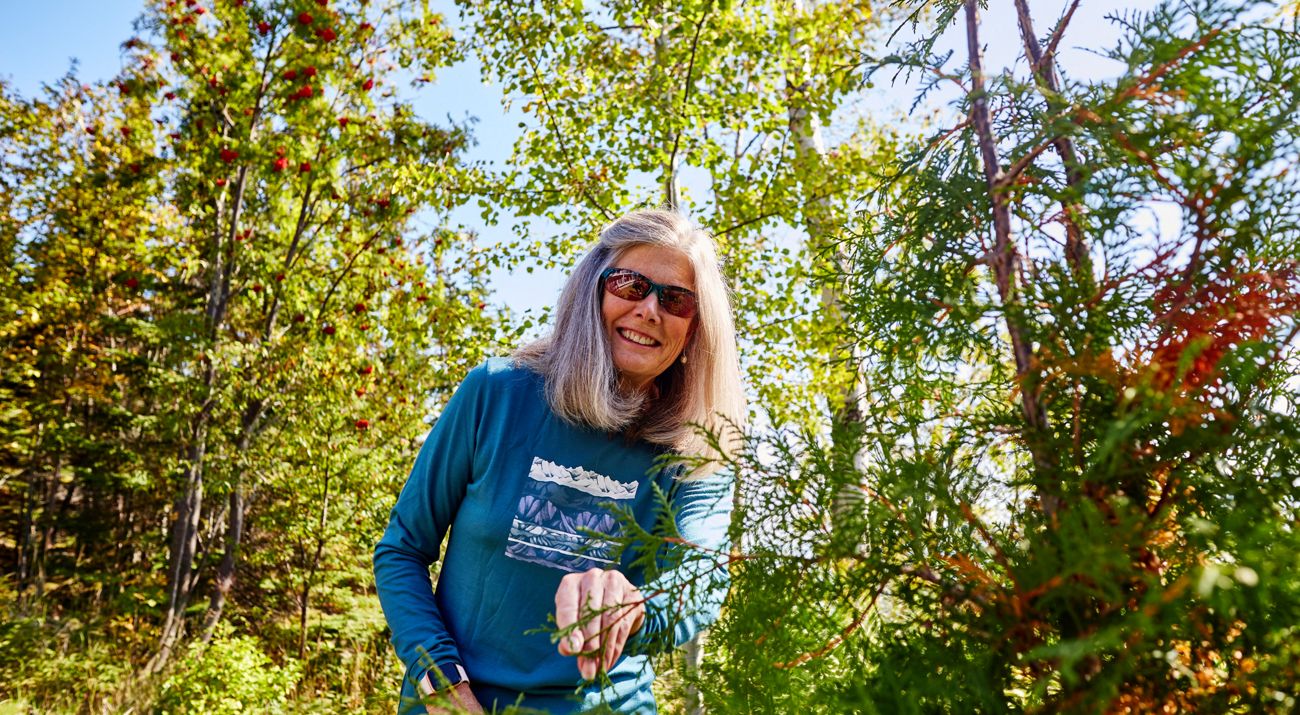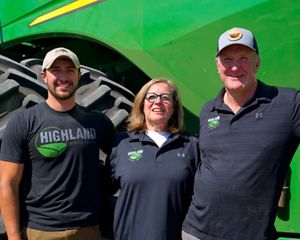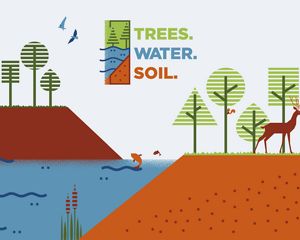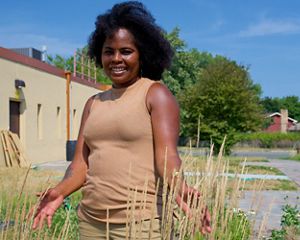Revitalizing the Forest: Susan Fuad
Motivated by their love of Minnesota's northern forests, Susan and her husband Ari have spent years working to restore the forests where they live.
Susan Fuad and her husband Ari have a fondness for Grand Marais, Minnesota that goes back many years. Ari’s family had a cabin there that he visited throughout his life, while Susan had memories of Grand Marais dating back to her first visit there, when she was in her early twenties.

About 20 years ago, the Fuads bought a three-acre property in the area. They planted a few white pine and red pines and protected them with cages. When they removed the cages, the trees were quickly eaten up as high as deer can reach. Deer browsing is a common challenge for pine seedlings. Luckily, the trees survived and the Fuads learned that they needed to keep the cages on until the trees matured.
Six years ago, the Fuads bought the property where they now live: a 23-acre parcel located two miles outside Grand Marais on Highway 61. The property needed a lot of work to become more attractive to people and wildlife. There were ATV trails on the property, and large amounts of downed wood was dormant on the forest floor, decaying slowly. The balsam fir were thinning and there was only one remaining white pine on the property. The Fuads worked to control invasive plants like thistle and reed canary grass and began to reforest the property.
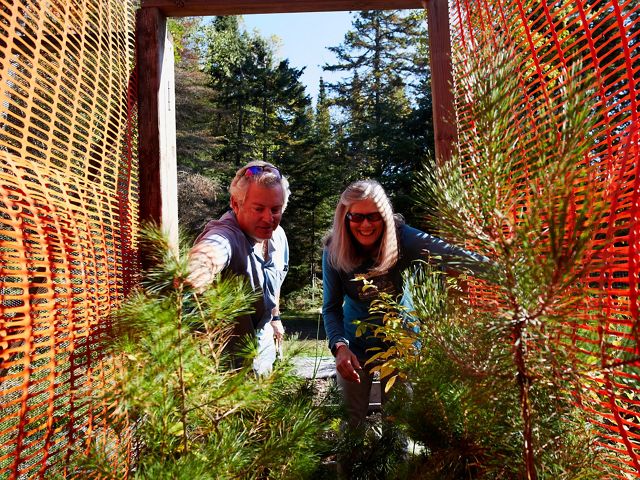
In addition to beautifying the land, reforestation provides a number of environmental benefits. Trees remove harmful pollutants from the air and store carbon. Diverse, well-maintained forests are healthier, offer better habitat for wildlife, are more resilient to wildfires and climate change, improve soil quality and minimize erosion. Clean lakes, rivers, streams and forests attract tourists, a vital part of Minnesota’s economy.


Landowners along Highway 61 benefit from the efforts of organizations like the North Shore Forest Collaborative (NSFC). The NSFC is a coordinated effort between local, state and federal land management agencies and is supported, in part, by the United States Forest Service and the Minnesota Forest Resources Council. Through the NSFC, individuals partner with public and private organizations such as the Weekes Family Foundation to restore and maintain native trees and associated forest communities along the north shore of Lake Superior. Among its other initiatives, the collaborative provides discounts on fence rolls, rebar stakes and zip ties for landowners to use for tree fencing.
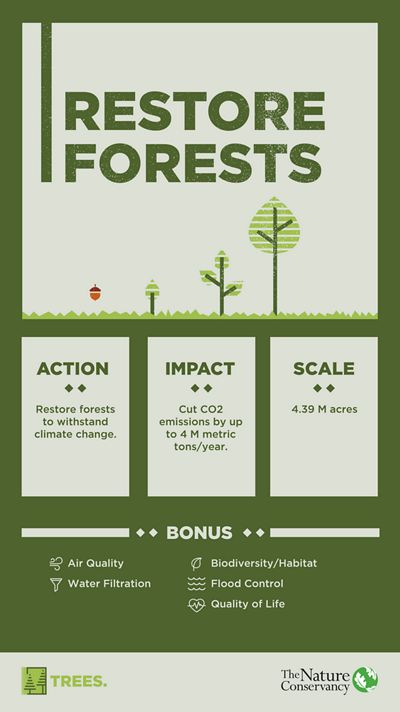
In 2015, inspired by classes they took with Mike Reichenbach, a University of Minnesota associate extension professor, and by a master naturalist class that Susan took, the Fuads ordered trees to plant on their property. Once the trees arrived, they learned that getting them into the ground required significant effort. Because their land is hilly and rocky, they sometimes had to use a pickaxe to create a planting bed.
To create a place for young trees to grow before being transplanted to their final location, the Fuads made a gravel bed nursery that is four feet wide and eight feet long. The nursery is connected to an irrigation system that waters the trees three times a day. The young seedlings can grow and even overwinter there. When the trees are large enough, Susan transports them to a planting location in the forest using an ATV. She also uses the ATV to carry containers of water, rebar, fencing, shovels, her pickaxe and other tools.
Finding places to plant trees is not easy. The land is rocky, and not all of it is conducive to growing trees; Susan also does not want to overcrowd the trees in the forest. She clears rock and gravel from a planting site and adds mulch to the soil. To stave off deer, she must place complete cages with rebar around white pine and white cedar; some tree species need only tubing around their trunks to protect them from hungry deer.
Quote: Susan Fuad
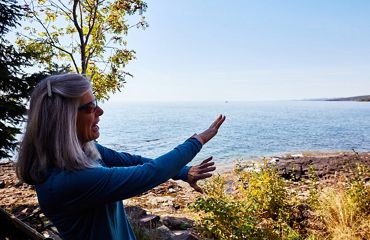
If we all do our part, it just restores this whole area to what it was: a better place for everyone and for our climate.
So far, the survival rate of the trees the Fuads have planted is over 95%. But the real fruits of their efforts—the growth of trees, the return of wildlife, the revitalized forest—will come in time. Susan uses paper clips on fencing to track the growth of her white pines each year, and the ones they planted a few years ago are now taller than she is. The white pines they planted on their previous, three-acre property are 20 to 25 feet tall.
Want More Stories?
Get new stories and timely action alerts so you can speak for our trees, water and soil.
Sign upThe Fuads were motivated to plant trees by their love of the land and their concerns about climate change. In addition to white pine, they also planted yellow birch and white cedar, one of their favorite trees. White pine and white cedar are increasingly favored in Minnesota for their climate resiliency; both are expected to do well in warmer climates. Many of the paper birch and white spruce trees on the Fuads’ property are beginning to decline and die. Yellow birch, on the other hand, can live around 200 years—far longer than paper birch, which lives 70 to 80 years.

Susan also wants to use their land to support wildlife and pollinators. She maintains a pollinator garden and plants sugar maples, red maples, nannyberry trees, black chokecherry trees, juneberry, plum and elderberry, among other plants, all of which attract foragers and wildlife. All told, the Fuads have planted more than 300 trees since 2015.
Neighbors have been inspired by their efforts and have started planting trees too. Along Highway 61, demand for tree seedlings among landowners is outpacing supply. The South St. Louis Soil and Water Conservation District helps with sourcing but often sells out of trees early in the season, so the Fuads and others pick up trees from North St. Louis Soil and Water Conservation District in Eveleth, Minnesota. “As you can see with the number of people ordering trees,” Susan says, “there’s a lot of inspiration around. There’s a greater demand for these tree seedlings.”
She adds, “It takes time, a little bit of money and physical labor. I’m just inspired to do what I can do as an individual, and if we all do our part, it just restores this whole area to what it was: a better place for everyone and for our climate.”
